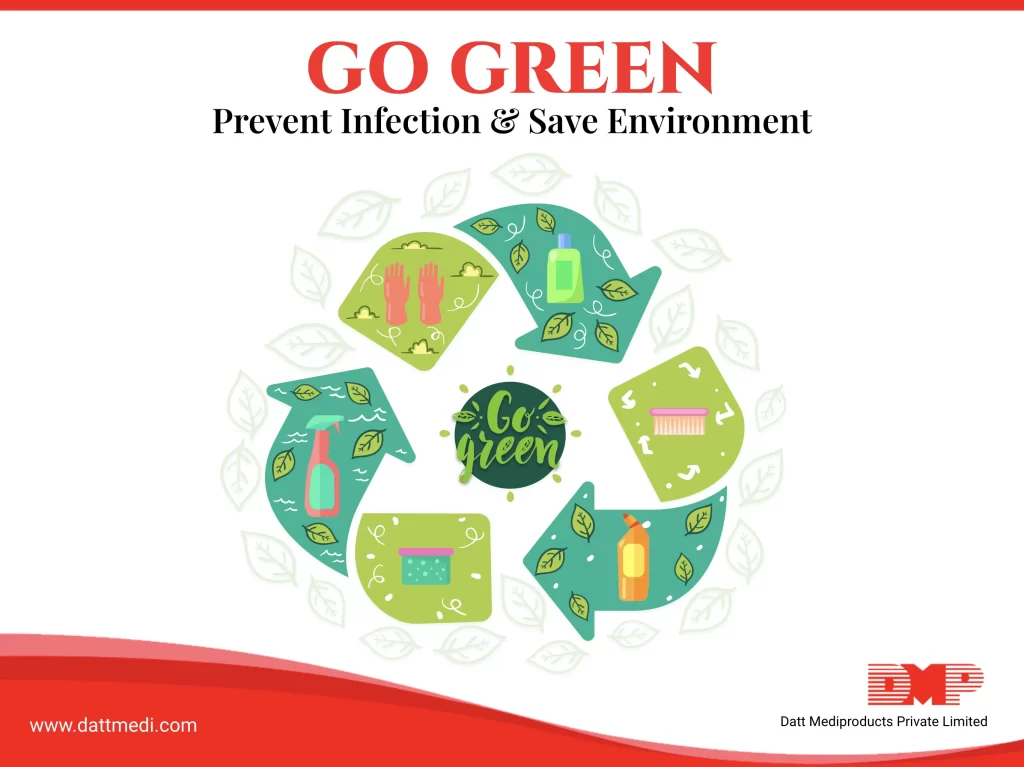
Accept the challenge to fight infection in a clean green way
With the threat of infection all around it is important to keep surfaces, the skin and nearby environments free from germs. The germs include viruses, bacteria, fungi that pose a threat to our health.
Various disinfectants, germicides and sterilisers are available in the market but always consider the advantages and potential hazards associated with these cleaning chemicals on your health and environment.
How do these chemicals impact health
The conventionally used non green cleaning and sterilizing products for home and workstations pose health hazards like headaches, throat irritation, eye irritation, asthma, skin rashes, and allergic reactions.
The frontline workers and the employees who clean regularly have to be very careful and use safety equipment so as to not get overexposed to these carcinogenic chemicals. The prolonged contact may pronounce these adverse effects and in some cases exacerbate chronic health conditions.
Threat on environment
The harmful chemicals used to disinfect the surfaces can release Volatile organic compounds (VOC) that impact the quality of indoor and outdoor air.
The chemicals used in cleaning and sanitizing purpose are ultimately discharged through drains polluting and can contaminate the water bodies. This may cause algal bloom ultimately adversely affecting the aquatic flora and fauna.
Emerging Hazards
Do we really check the composition of the disinfectant or sanitizer before buying?
Amid pandemic new products and technologies are getting mushroomed that further raises health concerns. As the demand for disinfecting and sanitization products is rising, new producers have spurred the market. In order to meet this unprecedented demand sometimes unhealthy practices can happen, like use of high levels of hazardous ingredients, such as methanol (wood alcohol) and 1-propanol in hand sanitizers.
Green Cleaning Products
Many products claim to be eco friendly and healthier than others available in the market. Some features of environment safe cleaning products include biodegradable, non toxic, phosphate free, free from dyes, hypochlorite and chlorine.
Some solutions
1. Use washable and reusable cloth masks in place of disposable one. Cloth masks are effective in filtering out 90% of droplets, and further filtering can be increased by placing filter inside the cloth masks.
2. Some natural products
Lemon, baking soda, vinegar, hydrogen peroxide, essential oils and alcohol are easily available and versatile products available in our kitchens that can be used to get rid-off stains and germs. Castile soap is another wonder product that is free of animal fats and other synthetic products. In order to kill the pathogens, these natural products must be used in high concentration.
3. Some homemade solutions
Equal proportion of vinegar and water in spray bottles can be used as all purpose cleaner.
A multipurpose disinfectant can be prepared by mixing 1tbsp each of castile soap and essential oil to 2 cups of water.
4. Zitride disinfectants are plant based, organic antimicrobial fine mist fogging solution. These are non-toxic, non-carcinogenic, and can be used for fogging without evacuating the room (in the presence of personnel).
When leaving home for school, office, or market we make sure to carry a face mask, hand sanitizer and water bottle.
It becomes important to understand the health and environmental risks involved with the use of these non-biodegradable chemical products used in routine. So we @dattmediproducts always ensure that our readers make safer and effective choices available.
Always make informed decisions to keep environment clean.





